Class News
Class of '64 Summer Fellowships for 2003
The Class of '64 Summer Fellowship for Juniors was awarded for 2003 to a pair of students! Kent Gould and Lisa Rothman are both Architecture majors in the design track who developed an interest in the impact of extreme climates on architectural design while exploring the work of Finnish architect, Alvar Aalto, in a small study group earlier this year. Our class joined with two other funding sources to help them go to Iceland, Fiji, and the Australian Outback in the summer of 2003 to study the commonalities in the ways in which arctic, desert, and rainforest climates affect the design of non-monumental or "vernacular" architecture (ordinary buildings, mostly houses).What follows is their report on their travels and observations, followed by interesting pictures they took in Fiji and Australia. Also see a relevant article from the magazine Environment: Yale.
Environmental Design in Extreme Climates
Report for the Class of '64
James Cohen lost his house to Hurricane Andrew in 1998. Vowing never again, he took his ideas for hurricane-resistant design to architect Toshiko Mori. Mori and Cohen sat down, and Cohen recollected aspects of the former home he liked and parts that he realized, in retrospect, could be improved. Mori then described a larger vision for the property and a new home to be built on the footprint of the former house destroyed by the hurricane. Pointing out ways in which the previous house consumed energy inefficiently, Mori outlined ideas involving natural ventilation in conjunction with tropical building, high ceilings providing cooler interiors, and a raised body. Cohen immediately noticed that his former home did not really respond to its site on an environmental level or an ecological one.
Environmental Design appears to be a relatively new principle in light of
recent movements associated with environmentalism. However, green design is
part of design strategies that have been practiced since building in extreme
climactic regions has begun. Vernacular design, which can briefly be defined
as local, folk, or popular building, has been generated by simple concepts
that make living in incredibly hot, cold, arid, and humid climates even
possible. Elaborations on simple design concepts, such as living low to the
ground or raising one's house, have slowly evolved into highly articulated,
eco-friendly design. Parts of the earth with extreme climates have often
developed more quickly due to the simple fact of necessity. Responses to
climate in parts of Alaska that lay above the Arctic Circle are survivalist.
Yet, the importance of green design has invaded even temperate parts of the
earth due to notions of land conservation, bio-degradability, environmental
efficiency, energy efficiency, air quality, and the desire to save money.
By comparing the architecture of varying (and often opposing) climates (in
this case study, Iceland as arctic, Fiji as tropical, and outback Australia
as desert), we hoped to search for a common link between structure and
climate. Ideally, these parallel efficiencies with respect to an
"environmental design" can be applied more generically to buttress the field
of sustainable design in temperate climates. Particularly, by examining
tropical, arctic, and desert extremes in a collective manner, design tactics
suited towards one region can inform the building patterns within another.
These three extremes in tandem offer design strategies on a greater
continuum of climates.
Our first destination this summer was Iceland. We spent the first couple of
days exploring Reykjavik, which we found to be a gorgeous capital city,
extremely clean and beautifully designed. The architecture in Reykjavik is
more edgy than in the United States; the daring nature of the buildings
contributes to a general sense of modernity in the city. More importantly,
many of the structures are designed to deal with long periods with little to
no sunlight. Buildings are not tightly spaced (to allow light to shine into
as many exposed surfaces as possible).
Specifically, the Reykjavik City Hall was particularly amazing; the building
evoked marine imagery and felt like a sunken Viking ship rising out of the
sea. In this way, the water surrounding the building on nearly all sides
served to reflect maximal amounts of light directly into the many facades.
Also in Reykjavik was the Pearl, a center for geothermal energy production.
An icon for the entire city, the Pearl rests on a hill above Reykjavik and
serves as a model for clean energy production and consumption. Similarly,
the Blue Lagoon, in nearby Keflavik, models the ways that geothermal energy
is utilized.
From Reykjavik, we circumnavigated the entire island by driving on the "Ring
Road," often dirt or gravel and always deserted. Especially on the south
coast, we were constantly aware of old turf huts embedded into the earth and
roofed with sod. Mud, grass, and stone were the primary building materials;
these materials together are amazing insulators, and, most importantly, are
accessible. Because of long periods without sunlight and the chemical
composition of the soil, Iceland encounters tremendous difficulties growing
trees. Without available lumber, materials that come from the earth directly
are literally the only options when creating a built environment.
Interestingly, the turf houses also take advantage of their own inhabitants
for heating. Often, living spaces are set above the livestock pens and
kitchens to take advantage of any excess heat released either from animals
or cooking.
Especially in the northern and eastern fjords, the orientation of homes
within each small town is critical. Surrounded by mountains on three sides,
sunlight often cannot shine on these small towns for several months. The
direction that the homes face as well as the presence of natural geographic
features that can shield these towns from the driving rains and snows of a
bitter winter are critical in town planning.
At the top of every mountain pass in Iceland is an emergency hut maintained
by the Icelandic Life Saving Association. These huts are made of bright
orange plastic and are geodesic. Inside a hut, the inhabitant becomes aware
of the wind and cold aurally as the gusts whistle and howl. We stayed in one
of these emergency huts for one evening; even though the experience was not
entirely comfortable, the orange objects served their survivalist purpose
and dealt simply and elegantly with an extreme climate.
In many of the small towns we visited, we noticed that most of the modern
buildings were constructed with metal cladding for the walls and the roof.
With little to no availability of wood (in the eastern fjords, there is an
entire driftwood industry, however), metal is the most economical building
material in terms of cost, ease of use and transport, and insulation
capacity.
Utilizing parallel, though completely different tools, vernacular
architecture in tropical regions responded to its climate with a sense of
tentative residency. We moved first to Fiji, spending an evening on the
mainland island in the city of Nadi. The following morning we headed onwards
towards Malolo Lai Lai Island and ultimately Shell Island. Immediately, the
humidity pervaded everything ― our clothes dampened (worn or not), farm
vegetation glistened bright green, and villages oriented themselves to take
advantage of drying, cooling breezes. The most predominant architectural
characteristic sat houses above grade by anywhere from a few inches to ten
feet or so. Literally, homes sat on stilts or cement pillars above ground to
take advantage of breezes that would blow through the landscape.
Additionally, circulation from above and below ― as well as side to side ―
presented itself as vital refreshment for people within homes. Wind shafts
were created by arranging corridors simply for ventilation and circulation.
By orienting doors and windows on uninterrupted linear paths, residents
could take advantage of breezes that blew from either direction, and carried
moisture from nearby landscaping. Windows themselves featured a sort of
paneling that allowed angled shutters to keep out directional rains and
permit cooling breezes. On a programmatic level, inhabitants often slept on
hammocks, using the same idea that one can raise themselves from the ground
plane in order to take advantage of cross ventilation from all directions.
After visiting several islands in Fiji, the tropical rainforest in Cairns
offered similar examples of certain architectural innovations in responding
to humidity and heat. In particular, when possible, villages nestled
themselves upon hills to take advantage of elevation as a means of removing
themselves from the ground plane for ventilation. Breezes that meandered
entire valleys could then traverse an entire hill or mountain, collecting
moisture from plant-life and cooling homes situated further up a slope.
Interestingly, residents often built floor boards of their homes with some
spacing to let ground moisture entire into their homes. Tropical
architecture concerned itself primarily with its relation to the ground
plane as a means of ventilation.
If tropical architecture had a tendency to move upwards, then desert
architecture used the same line of thought to a completely different end.
Venturing into the Australian outback, we first visited Coober Pedy, a town
with nearly half of its dwellings underground, and then onwards towards
Uluru, a resort community sheltered in part with tent-like structures. Homes
in Coober Pedy take advantage of a hard, desert rock to initially explode
into ground and then burrow within it. Homes sat part underground, often
with one face or "façade" exposed to the ground level. Most common were
homes built into a slope so that one façade looked downward into a slight
valley. The homes had the impressive ability to boast a temperature
stability of around 5 degrees Celsius at any given point ― without any means
of artificial cooling systems. During the day, the rock heats itself through
solar means and come nighttime, the rock simply releases its heat into the
household. Considering that the highs and lows within the desert on a
particular day can have a range of about 20 degrees Celsius, a natural means
of stabilizing a comfortable temperature is remarkable. The homes dealt with
ventilation through air shafts, sometimes 15 meters in length, as they
extended into the underground homes and provided a means of letting outside
air in and inside air out.
The resort community of Uluru used tent-like structures over existing
roofs as a means of cooling the entire building and exterior spaces as well.
The lesser impending threat of moisture allowed for more sophisticated tent
structures to exit. Throughout much of the area, businesses took advantage
of the rare two hours of the day when the climate became moderate (usually
around dinnertime or dusk) and used openable facades to let dining spaces
merge with the outside. The desert architecture looked towards below for a
means of stabilizing the drastic changes in temperature highs and lows
within a desert.
Having returned from three dramatically different climates, we have begun to
synthesize our findings from each region. Building a collection of images
from our travels and writing separate theses, we have analyzed our
observations and understand them in a more collective way rather than
disparate approaches to extreme climactic conditions. We look forward to
sharing with you the overarching concepts of our meta-theories and many of
the photographs from our journey. We would like to take this opportunity to
thank you for the your support towards our research. For each of us, the
project has informed our studies in our senior year at Yale enormously, and
will remain with us as we intend to enter design-related fields.
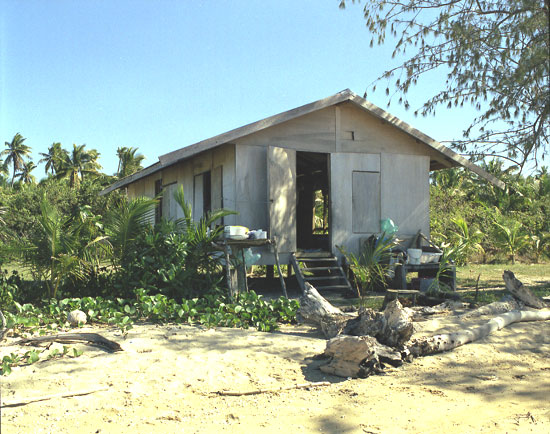
Fiji: Open house plan
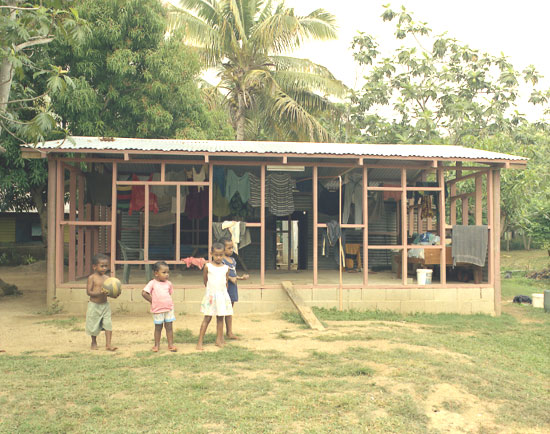
Fiji: Open patio plan
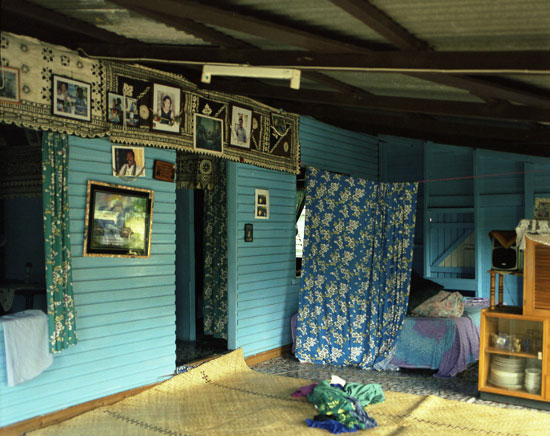
Fiji: Home interior
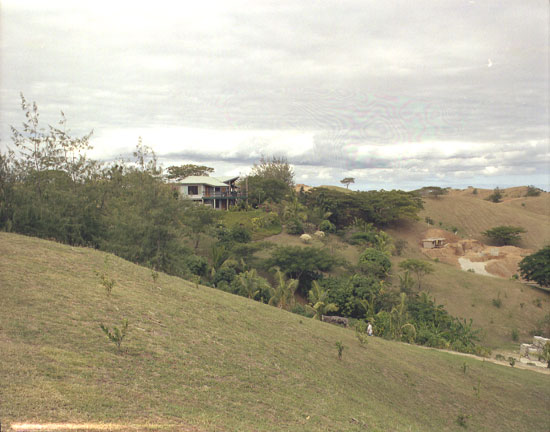
Fiji: Musket Cove
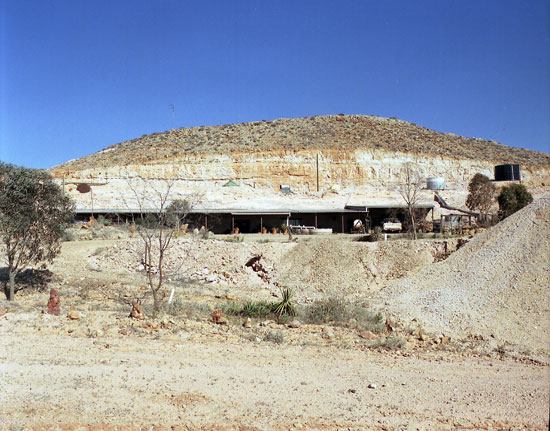
Australia: Underground buildings
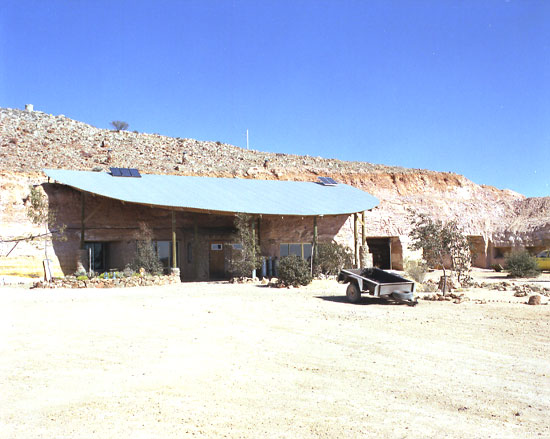
Australia: Underground building
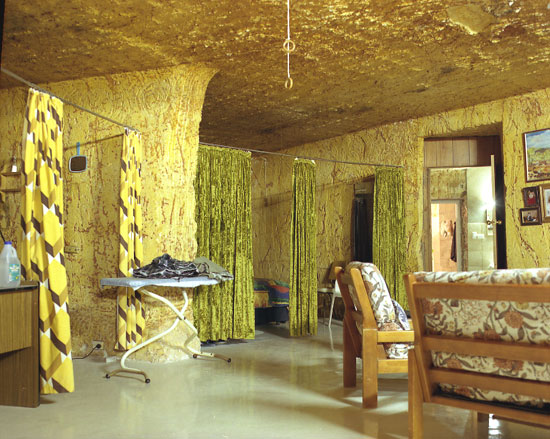
Australia: Underground living room
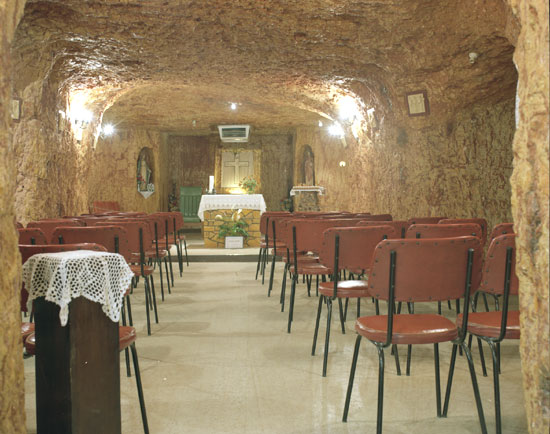
Australia: Coober Pedy church
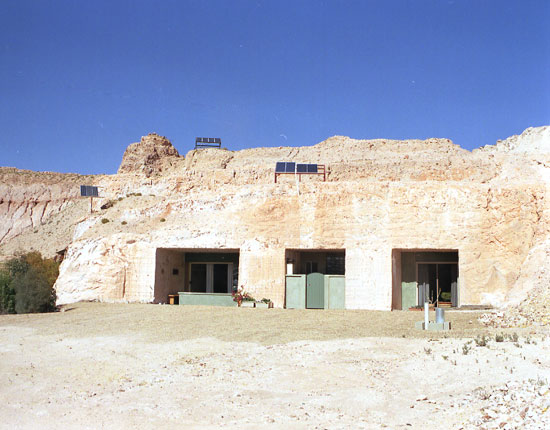
Australia: Tasmanian Embassy

